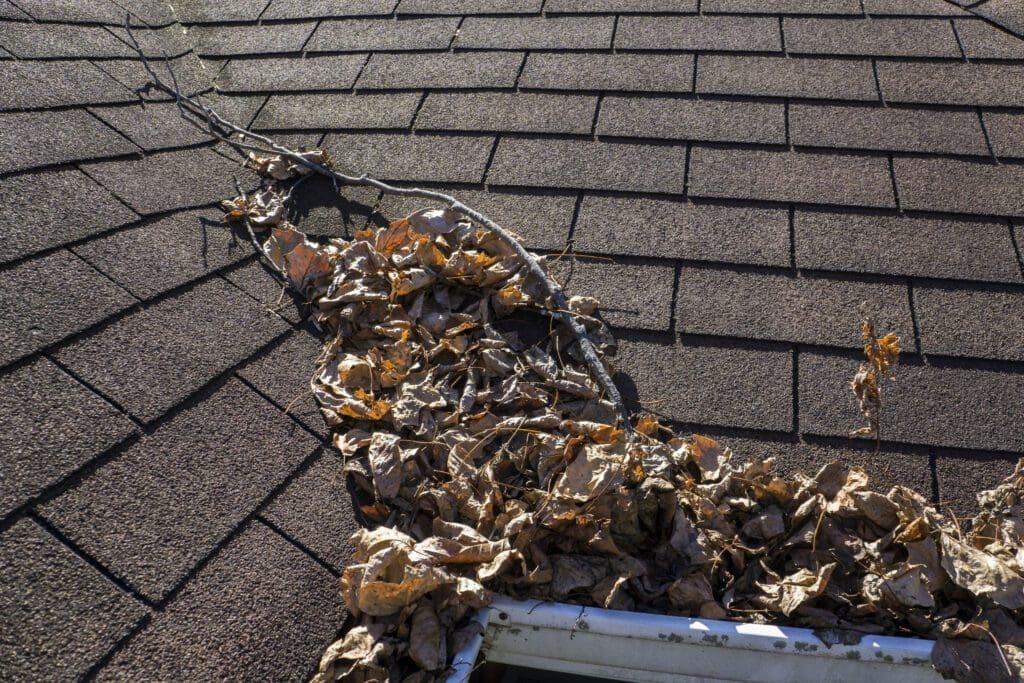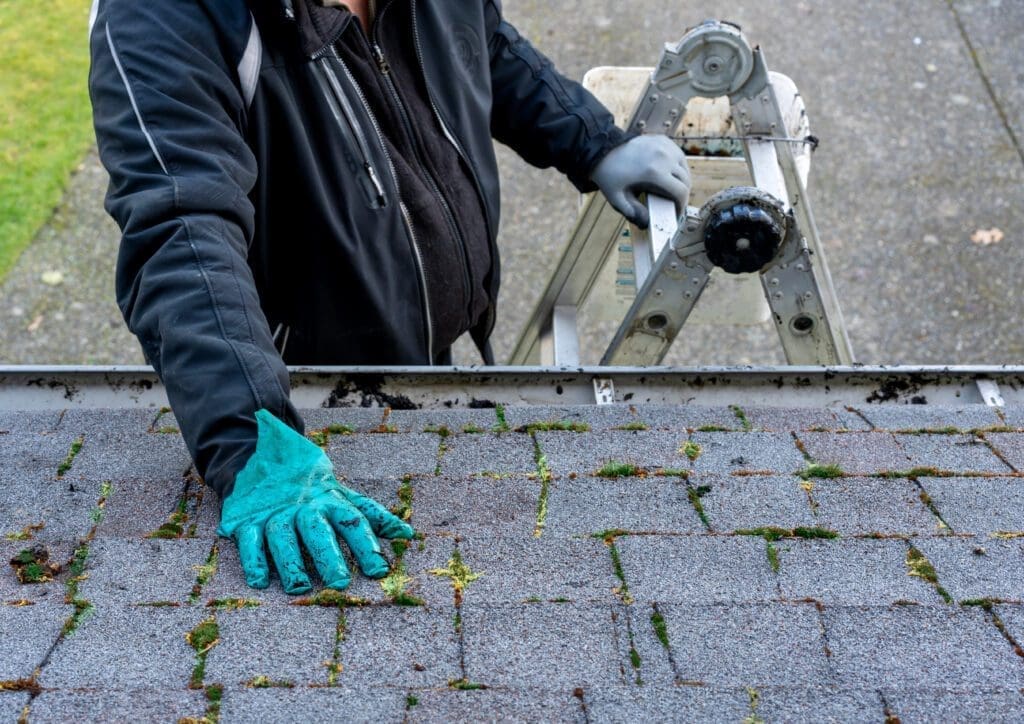Most roofing materials are susceptible to unsightly “stuff” growing on them. What you can do about it, though, varies a bit, depending on your type of roofing material. Since more than 75% of roofs in the US use asphalt shingles, let’s focus on that material and what to do when it needs attention. Here, we’ll look at how to clean an asphalt shingle roof. Plus, we’ll mention some tips for preventing more growth in the future.
What’s the Problem?
When you see something growing on your roof, you might think it’s mold and/or mildew. Usually, however, it’s not mold and mildew but algae or moss. These are two different plants, but neither is welcome on your roof. Both are prevalent in moist areas, but algae is more likely to be growing on any areas of your roof, including sunnier areas. Moss is more likely to be growing on any north-facing roof surfaces than in direct sunlight.
Algae causes the unsightly dark streaks that are so common on Florida roofs. While algae isn’t necessarily harmful to an asphalt shingle roof, it looks terrible and will affect the ability of a “cool roof” to stay cool. Cool roofs use certain components, such as ceramics on the shingles, to reflect sunlight and lessen the heat transfer from the roof into the attic. That saves you money on your air conditioning use, so cleaning off that algae is a good idea.
Moss is a big problem, in contrast to algae. This plant can grow at the edges of the shingles and cause them to curl and degrade faster. The plants hold water, and on a low-sloped roof could cause water to move laterally and reach the wooden roof deck. That’s exactly what the roof is supposed to prevent. Curled shingles are also much more likely to be lifted by high winds. That can result in serious damage to your roof, which will require immediate repair.
How to Clean An Asphalt Shingle Roof
According to the Asphalt Roofing Manufacturers Association, cleaning your asphalt shingle roof is quite simple. This project does require you to get up on your roof, however, so it’s not for everyone. If you aren’t comfortable working on your roof, please hire a pro. Better safe than sorry, of course.
It’s best to perform this task on a cloudy and still day so the mixture doesn’t evaporate so quickly. Your first step is to lightly sweep the entire surface of the roof. Never use a pressure washer on an asphalt shingle roof, as high-pressure water will dislodge the granules. That will seriously shorten the life of your shingles!
You can also use a leaf blower, if you can safely use the machine while working on your roof. Just remember to always point the nozzle downhill, or from the peak to the eave. If you point the nozzle uphill, you may loosen the bottom edge of some shingles. Not good. One great advantage of a blower is clearing the gutters at the same time. As long as the roof and gutters are dry, any debris that’s present will blow away easily. Your goal is to remove all loose material from the roof surface.
The next step is mixing the cleaning solution. You’ll see many different recommendations around the internet, but the Asphalt Roofing Manufacturers Association recommends a 50:50 mix of water and laundry-strength liquid chlorine bleach. You can also add a couple ounces of dishwashing detergent to help keep the solution in place while it does its work. Mix the solution in a low-pressure tank sprayer. Then, take the hose and spray plain water over all the plants and any surfaces on or near the house that might get hit with the mixture. The water will help to protect it all from the bleach mixture.
Next, spray the mixture on the shingles and let it stand for 20-30 minutes. Spray the plants again, and then rinse the solution from the roof. Depending on the condition of your roof, you may want to spray the bleach mixture again a few days later, but it’s wise to wait a while and see how it looks. Moss, in particular, may take more time to completely die and fall off the roof.
How to discourage algae and moss growth
After you’ve cleaned your asphalt shingle roof, you can keep it looking good with some basic annual maintenance. First, keep the roof surface clear of debris. Use a blower to remove leaves, twigs, and so on. Use can also use a broom, but be gentle.

Keep trees and vegetation trimmed back from the roof surface to keep the space open to breezes. This step might require a professional who can trim branches at dangerous heights. You shouldn’t need to handle this type of work every year, though. The goal is just to ensure that trees and shrubs are not in contact with the house.
When it’s time for a new roof, some shingles incorporate anti-algae components. GAF, a shingle manufacturer we use often, incorporates copper into the granules in the shingles. The shingles look like their typical architectural shingles and have a 25-year warranty against algae growth. This is a no-brainer, in our opinion, but it’s still a good idea to be proactive in keeping the roof surface clean.
Another method that you may see is a strip of zinc or copper at the top edge of the roof near the peak. You just attach the strip across the roof, partially tucked under the shingles. When rain hits the zinc or copper strip, molecules of the metal wash down the surface of the roof. Those molecules will kill the algae and moss, but it’s debatable whether or not they’re worth the effort. First, there’s some evidence that they don’t work for long. Second, they require you to nail them in place, which just puts more holes in your roof.
We’re Here When You Need Us
Just a few hours of maintenance per year can lengthen the life of your roof, so we’d say it’s worth the effort. If you have questions, or need to talk about replacing your roof, give us a call at 813-373-9088. Our team has more than 40 years of experience in roofing. You can also use this form and we will contact you.



